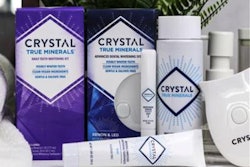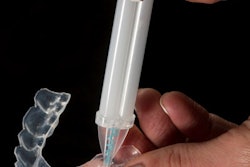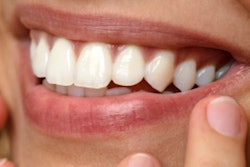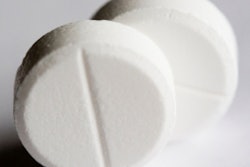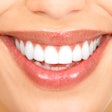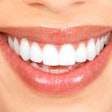
Can a violet light-emitting diode (LED) system offer an alternative to teeth-whitening procedures using concentrated peroxides, which can damage dental pulp? Researchers conducted a small case series and found it might be a valid option.
Violet LED light was effective, especially in combination with carbamide peroxide, they reported in Photodiagnosis and Photodynamic Therapy (August 22, 2019).
Teeth whitening is one of the most sought-after treatments by patients. However, some of these treatments use highly concentrated peroxides, which may damage the pulp of the lower incisors, the study authors wrote.
A relatively new treatment option is the use of a violet LED. The light is emitted at a wavelength of 405 nm to 410 nm. It can be used either by itself or in conjunction with a bleaching gel.
Researchers wanted to evaluate the color change and dental sensitivity of six patients who received irradiation with a violet LED in a dental office. They compared the results from three different treatments along with the LED for 20 minutes three days a week at the practice:
- At-home bleaching with 10% carbamide peroxide for four hours a day for 21 days
- In-office bleaching with 17.5% hydrogen peroxide for 45 minutes while also receiving the violet LED irradiation treatment
- Treatment with a placebo gel along with the violet LED irradiation treatment
The researchers evaluated the color on teeth 13 through 23 and also conducted a sensitivity analysis.
The mean value scores for color change were consistently higher for the carbamide peroxide plus violet LED treatments (see table below).
| Impact of teeth-whitening techniques by mean values of color change | |||
| Technique | 7 days after starting treatment | 14 days after starting treatment | 21 days after starting treatment |
| Carbamide peroxide with no light | 7.17 | 7.83 | 11.41 |
| Carbamide peroxide with violet LED | 11.98 | 14.05 | 18.23 |
| Hydrogen peroxide with no light | 3.94 | 6.34 | 7.54 |
| Hydrogen peroxide with violet LED | 5.51 | 8.03 | 8.99 |
| Placebo with no light | 1.67 | 1.66 | 0.68 |
| Placebo with violet LED | 2.74 | 3.34 | 5.37 |
The authors noted that this was a very small study and that more research was needed. While there was insufficient evidence to draw a definitive conclusion about the treatment, a positive effect was seen, they concluded.
"Considering that this new technology has been commercialized, even with very little information about its efficacy and safety, we believe that our results can contribute to the knowledge of the potential of this modality in bleaching procedures and to establish new protocols and levels of safe irradiation to perform bleaching treatment," wrote the study authors, led by Marjorie de Oliveira Gallinari of the department of restorative dentistry at the Araçatuba Dental School in São Paulo.




